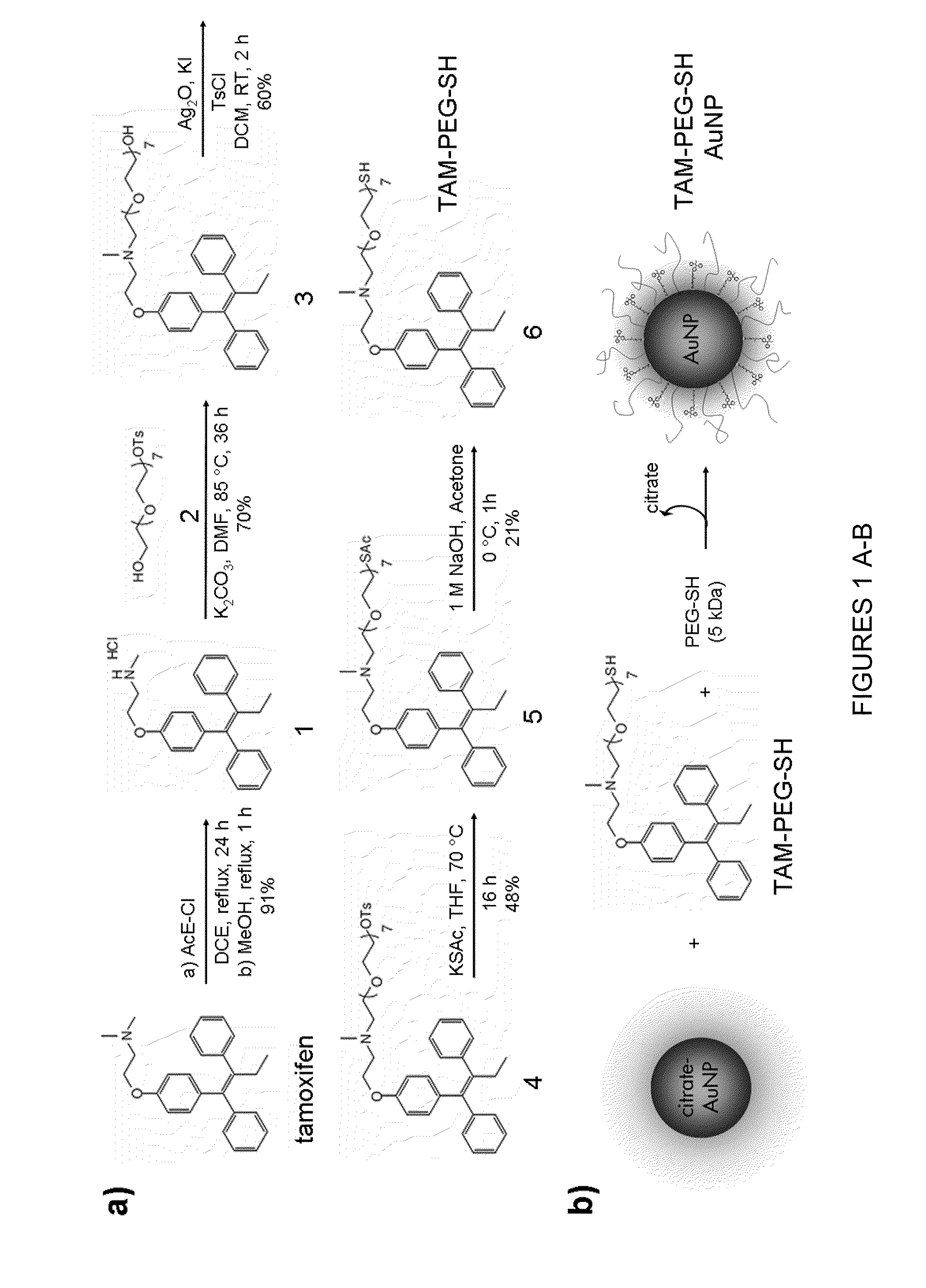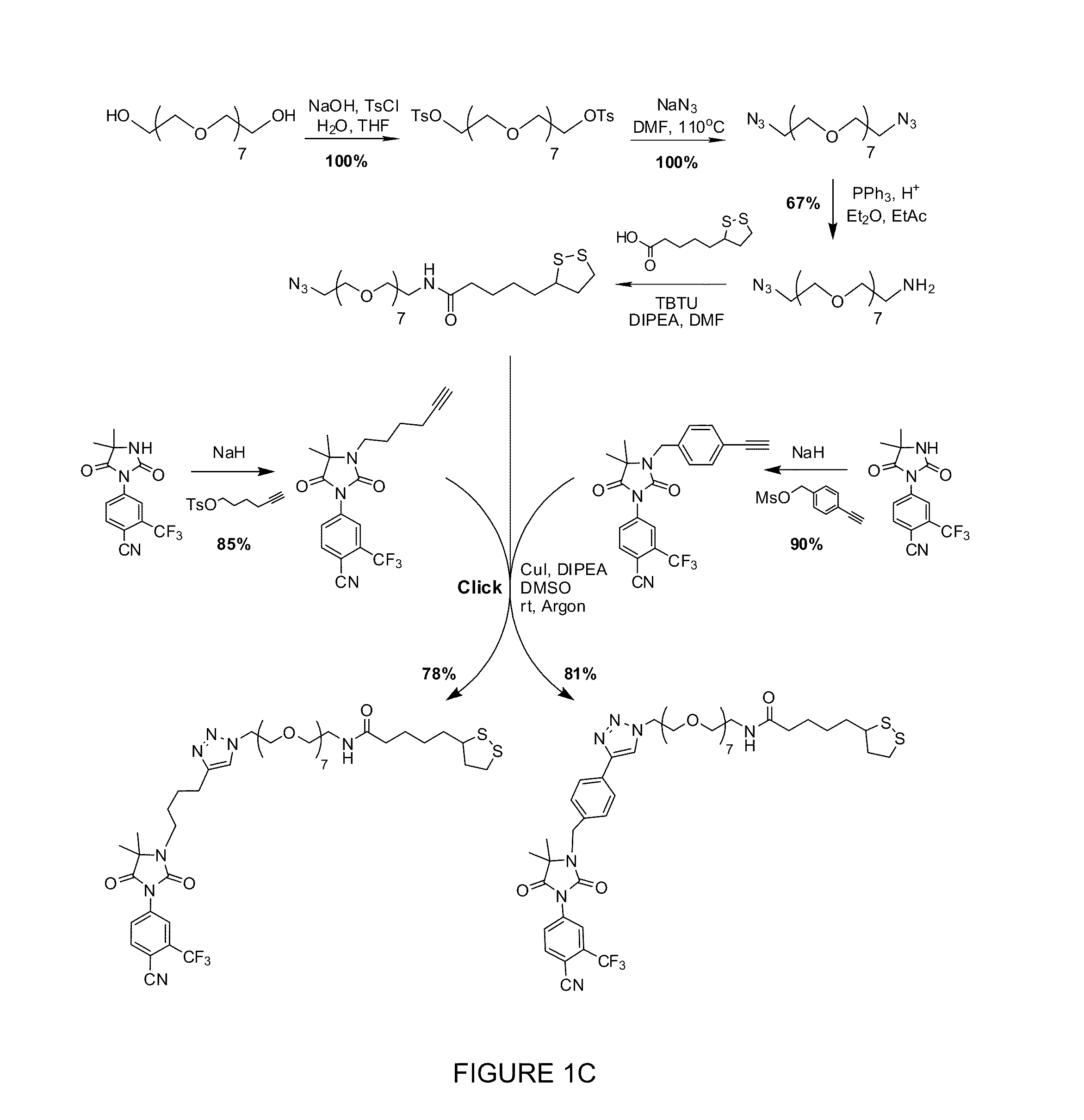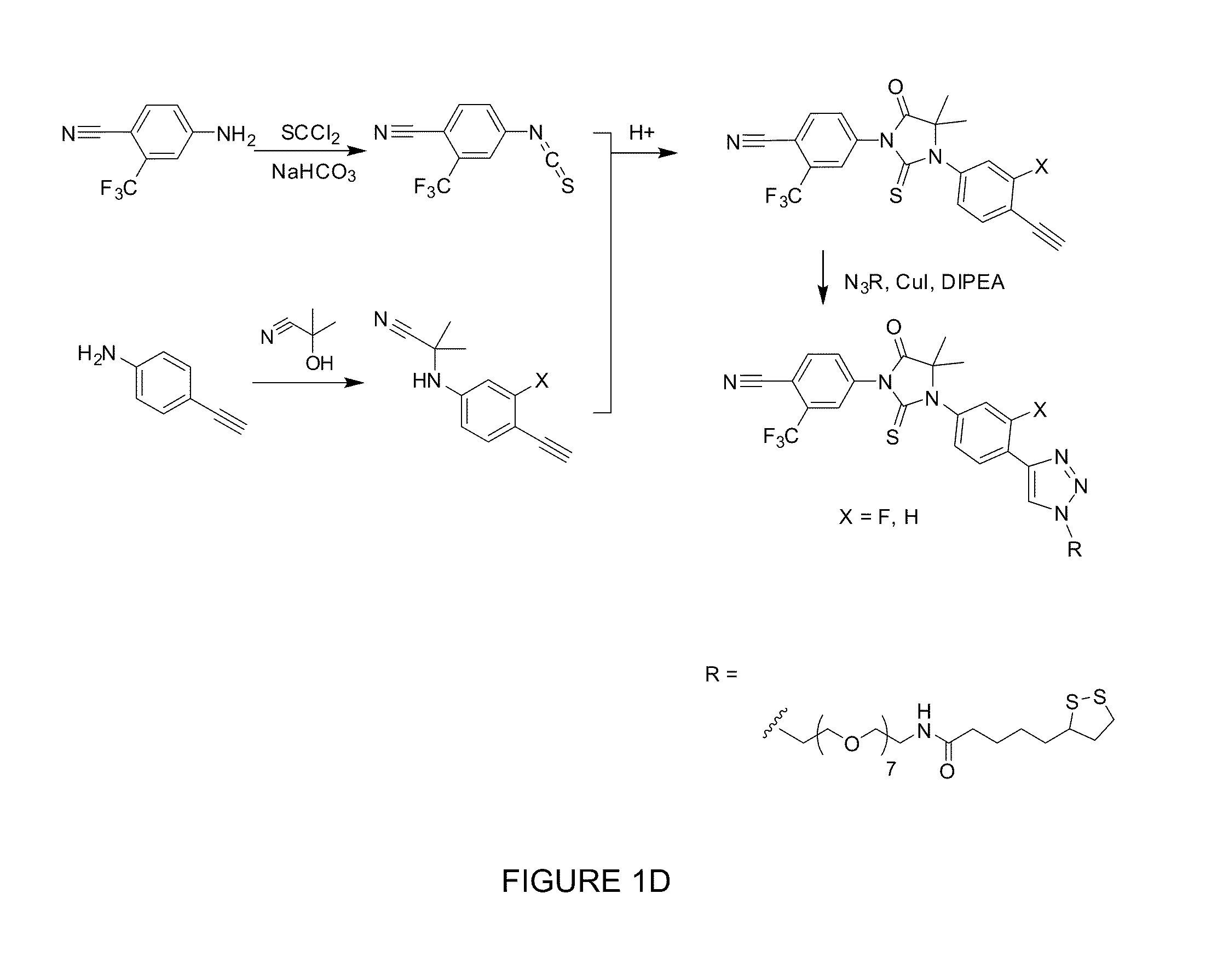Targeted cellular delivery of nanoparticles
a nanoparticle and cellular technology, applied in the direction of biocide, drug composition, therapy, etc., can solve the problem of inability to distinguish between the nucleus of normal cells and tumor cells
- Summary
- Abstract
- Description
- Claims
- Application Information
AI Technical Summary
Benefits of technology
Problems solved by technology
Method used
Image
Examples
example 1
Tamoxifen-Peg-Thiol Gold Nanoparticle Conjugates: Enhanced Potency and Selective Delivery for Breast Cancer Treatment
[0071]Like several members of the hormone receptor family, estrogen receptor (ER) isoforms are located both intracellularly and on the cell membrane (31-33). Gold nanoparticle analogs of the commercial pharmaceutical tamoxifen could therefore act not only as, selective targeting agents, but also as increasingly potent endocrine treatments for malignancies which overexpress ER (e.g. breast cancer). To this aim, a thiol-polyethylene glycol (PEG-SH) tamoxifen derivative was synthesized for subsequent gold nanoparticle (AuNP) conjugation (Scheme 1). A biocompatible (18, 34) PEG-SH linker was employed (i) to enable covalent attachment to the AuNP surface (Au—S 126 kJ*mol−1) (35, 36), (ii) to minimize opsonin binding and reticulo-endothelial system uptake (37), (iii) to suppress non-specific cell binding / uptake (38) and protein adsorption (18, 21), and (iv) to afford stabil...
example 2
In Vitro Laser Photothermal Therapy of Estrogen Receptor (+) Breast Cancer Cell
[0093]MCF-7 cells were incubated with 0.5 μM TAM-PEG-SH or an equivalent concentration bound to gold nanoparticles (AuNPs) for 24 h to reflect steady-state blood plasma concentrations of tamoxifen administered at 10-20 mg / day (0.40 and 0.81 μM, respectively). Following this incubation, cell cultures ere gently rinsed in sterile DPBS buffer and replaced with unmodified growth media prior to laser photothermal treatment. Laser photothermal treatment was performed using the 514.5 nm line of an argon ion laser (Innova 300 Coherent) for 2 min at room temperature (0.32 cm2). Control cells were similarly removed, however, were untreated with the laser. As shown in FIG. 7, in cells exposed to TAM-PEG-SH bound to gold nanoparticles, a statistically significant increase in growth inhibition was observed commensurate with an increase in the power density of the laser. It is worth noting that in the absence of laser ...
PUM
| Property | Measurement | Unit |
|---|---|---|
| hydrodynamic diameter | aaaaa | aaaaa |
| temperature | aaaaa | aaaaa |
| v/v | aaaaa | aaaaa |
Abstract
Description
Claims
Application Information
 Login to View More
Login to View More - R&D
- Intellectual Property
- Life Sciences
- Materials
- Tech Scout
- Unparalleled Data Quality
- Higher Quality Content
- 60% Fewer Hallucinations
Browse by: Latest US Patents, China's latest patents, Technical Efficacy Thesaurus, Application Domain, Technology Topic, Popular Technical Reports.
© 2025 PatSnap. All rights reserved.Legal|Privacy policy|Modern Slavery Act Transparency Statement|Sitemap|About US| Contact US: help@patsnap.com



